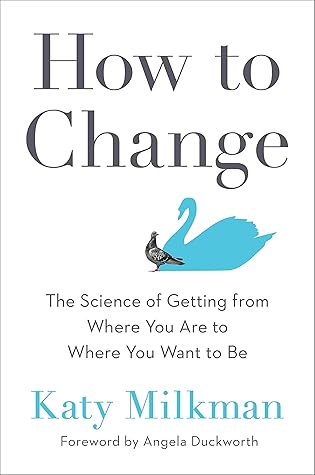More on this book
Community
Kindle Notes & Highlights
by
Katy Milkman
Read between
January 9 - January 27, 2022
You’ll learn that making hard things seem fun is a much better strategy than making hard things seem important.
But to give yourself the best chance at success, it’s critical to size up your opponent and develop a strategy tailored to overcome the particular challenges you face. The surest path to success is not one-size-fits-all. Instead, you must match your approach to your opponent.
Behavior change is similar. You can use an all-purpose strategy that works well on average. Set tough goals and break them down into component steps. Visualize success. Work to create habits—tiny ones, atomic ones, keystone ones—following the advice laid out in self-help bestsellers. But you’ll get further faster if you customize your strategy: isolate the weakness preventing progress, and then pounce.
When policy makers, organizations, or scientists applied a one-size-fits-all strategy to change behavior, the results were mixed. But when they began by asking what stood in the way of progress—say, why their employees weren’t saving enough money or getting flu shots—and then developed targeted strategies to change behavior, the results were far better.
if you want to change your behavior or someone else’s, you’re at a huge advantage if you begin with a blank slate—a fresh start—and no old habits working against you.
rather than perceiving time as a continuum, we tend to think about our lives in “episodes,” creating story arcs from the notable incidents, or chapters, in our lives.
We’re more likely to pursue change on dates that feel like new beginnings because these moments help us overcome a common obstacle to goal initiation: the sense that we’ve failed before and will, thus, fail again.
These statistics suggest that when we’re seeking to change, the disruptions to our lives triggered by physical transitions can be just as powerful as the fresh starts spurred by new beginnings on our calendars.
These findings, combined with Hengchen’s, make it clear that while fresh starts are helpful for kick-starting change, they can also be unwelcome disruptors of well-functioning routines. Anyone seeking to maintain good habits should beware.
Economists call this tendency to favor instantly gratifying temptations over larger long-term rewards “present bias,” though its common name is “impulsivity,” and it’s unfortunately universal.
We just need to “flip the script” so that instant gratification is working for us, not against us. Research has proven time and again that rather than relying on willpower to resist temptation, we’re better off figuring out how to make good behaviors more gratifying in the short-term. Big payoffs far down the road just aren’t enough to keep us motivated. The Mary Poppins approach takes the fun that might typically distract us from our goals and uses it to transform an obstacle into an enticement—suddenly we want to go to the gym, focus at work, eat a healthier diet, and study harder. That kind
...more
Forming an implementation intention is as simple as filling in the blanks in the sentence “When ___ happens, I’ll do ___.”
A manuscript written in the 80s BC called Rhetorica ad Herennium first introduced a now popular idea that to commit things to memory, we can link them with vivid scenes or objects. This is the origin of “memory palaces.” To memorize information using a memory palace, you associate each item you hope to recall with scenes or places you know well. For instance, you might use your house (your “palace”) to commit a list to memory by imagining a walk through it and festooning each room you encounter with vivid imagery evoking items on your list.
Useful mnemonic devices like these can also be auditory. When I was taught about the subclassification of animals first into kingdom, then phylum, then class, then order, then family, then genus, and finally, species, I learned the phrase “Kings Play Chess on Fine Green Silk.” The first letter of each word cues a memory of one of these categories and reminds me of their proper order.
Plans don’t change minds—they only help us remember to do the things we already want to do.
Self-efficacy is a person’s confidence in their ability to control their own behavior, motivation, and social circumstances.
Our expectations shape our outcomes.
if more people could reach their goals if they were encouraged to (1) seek out people with a wealth of knowledge they’d likely overlooked, and (2) deliberately copy and paste their life hacks.
The key is to treat change as a chronic problem, not a temporary one,
When you use the tools in this book to overcome whatever internal obstacles you face on your journey to create change, recognize that you’ll want to use them not once or twice or for a month or for a year or two, but permanently. Or, at least, until you no longer want to achieve whatever it is you set out to achieve in the first place.
I’ve found maintaining change in the face of internal obstacles is far easier than initiating it. For many years, I’ve successfully engineered change in my own life using the strategies in this book—temptation bundling to make exercise fun so I stay fit, surrounding myself with friends and colleagues who believe in me and who are role models to boost my confidence and stretch my ambition, harnessing fresh starts to tackle new challenges (such as writing this book, which I began on the very day I became a homeowner), and making cue-based plans to avoid flaking out.
By diagnosing the internal obstacles you face and consistently using solutions customized to help you succeed, evidence and experience show that you really can get from where you are to where you want to be.


